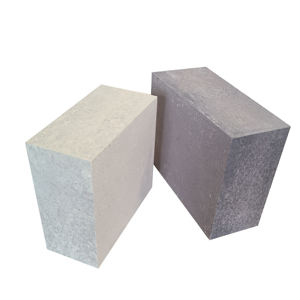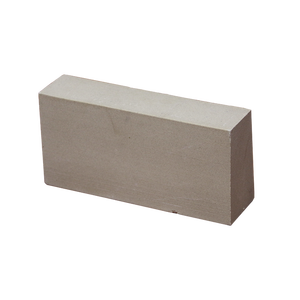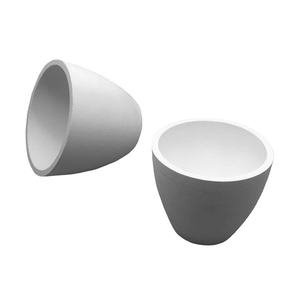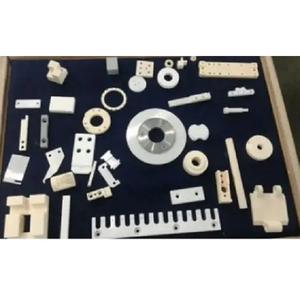Professional industry ceramic supplier, silicon nitride, silicon carbide, aluminum nitride and any other kinds of ceramics.
PRODUCT PARAMETERS
Description
Overview of Factory Refractory Low Cement Castables Self-Flowing Castables For Boiler And Furnace
Factory Refractory Low Cement Castables Self-Flowing Castables For Boiler And Furnace are non-metallic substances designed to withstand extreme temperatures exceeding 1,000°C, along with harsh chemical and physical stresses. They are essential for the inner linings of industrial furnaces, kilns, reactors, and incinerators, providing critical thermal insulation and structural integrity in processes ranging from metal and glass manufacturing to power generation.
Features of Factory Refractory Low Cement Castables Self-Flowing Castables For Boiler And Furnace
-
High-Temperature Resistance: Maintain structural strength and stability at temperatures often exceeding 1500°C.
-
Excellent Thermal Shock Resistance: Withstand rapid heating and cooling cycles without cracking or spalling.
-
Chemical Inertness: Resist corrosion and degradation from slags, molten metals, and acidic or basic environments.
-
High Mechanical Strength: Possess considerable load-bearing capacity at operating temperatures.
-
Low Thermal Conductivity: Provide effective insulation to improve energy efficiency and protect furnace structures.
-
Abrasion Resistance: Withstand erosion from solid materials and gas flows.
Specification of Factory Refractory Low Cement Castables Self-Flowing Castables For Boiler And Furnace
Factory refractory low cement castables self-flowing castables handle intense heat in boilers and furnaces. These castables resist very high temperatures well. They contain less cement than older types. This makes them stronger against heat and chemicals. They also resist wear better. Low cement means less water is needed for mixing. This makes the final product denser and tougher.
The self-flowing feature is key. You pour this castable mix. It flows easily into complex shapes and tight spots. It fills gaps completely without needing vibration. This saves significant labor time. It ensures a uniform, solid lining. Less manual work reduces installation errors. It also speeds up furnace repairs. Less downtime is good for production.
These castables use special graded aggregates and fine powders. The particle sizes are carefully chosen. This allows the mix to flow freely. It also packs tightly after setting. Additives improve the flow and set time. The mix stays workable long enough for proper placement. Then it hardens reliably.
Performance under heat is critical. These castables keep their strength at extreme temperatures. They resist thermal shock. Sudden temperature changes cause less cracking. They also resist attack from slag and hot gases. This extends the furnace or boiler lining life. Fewer repairs are needed.
Installation is straightforward. Mix the dry castable with clean water. Follow the supplier’s exact water ratio. Mix thoroughly until uniform. Pour the mix into the prepared area. Let it flow into place. Avoid adding extra water. Extra water weakens the final lining. Cure the castable properly after placement. Follow the manufacturer’s curing schedule. Good curing ensures maximum strength and durability.
Use these castables in many hot areas. They line boiler walls, floors, and hoppers. They work in furnace hearths, walls, and burner blocks. They repair damaged sections quickly. They form complex shapes in pre-cast parts. They are essential for reliable, long-lasting high-temperature operations.
Applications of Factory Refractory Low Cement Castables Self-Flowing Castables For Boiler And Furnace
Factory refractory low cement castables self-flowing castables solve tough problems in boilers and furnaces. They handle extreme heat and physical stress. Their self-flowing nature is key. They pour easily into complex shapes and tight spaces. You don’t need vibration tools. This saves significant labor and time during installation. It also ensures a dense, uniform lining without weak spots or air pockets. This uniformity is crucial for long life under harsh conditions.
Low cement content makes these castables different. Less cement means better performance at high temperatures. It improves resistance to abrasion and chemical attack from slag or ash. These castables develop strong bonds and remain stable even under intense heat. They resist cracking and spalling better than older products. This directly extends the service life of your boiler or furnace lining. Less downtime for repairs means more production time.
In boilers, self-flowing low cement castables are perfect for critical zones. Use them in cyclone separators facing severe abrasion. Line burner throats exposed to high heat and flame impingement. Repair hoppers and ash pits efficiently. They flow into intricate burner block designs perfectly. The dense lining resists erosion from hot gases and fly ash particles. This keeps your boiler running longer between maintenance shutdowns.
Furnaces need reliable linings too. Steel ladles benefit from these castables in slag lines and impact pads. Cement kilns use them for inlet cones and burner pipes. Foundry furnaces apply them to spouts and runners. The self-flowing property simplifies lining complex geometries. The low cement formulation withstands molten metal splash and slag corrosion. It maintains structural integrity through repeated thermal cycling. This reliability reduces unexpected furnace failures.
Company Profile
Tanki New Materials Co.Ltd. focus on the research and development, production and sales of ceramic products, serving the electronics, ceramics, chemical and other industries. Since its establishment in 2015, the company has been committed to providing customers with the best products and services, and has become a leader in the industry through continuous technological innovation and strict quality management.
Our products includes but not limited to Aerogel, Aluminum Nitride, Aluminum Oxide, Boron Carbide, Boron Nitride, Ceramic Crucible, Ceramic Fiber, Quartz Product, Refractory Material, Silicon Carbide, Silicon Nitride, ect. please feel free to contact us.

Payment Methods
T/T, Western Union, Paypal, Credit Card etc.
Shipment Methods
By air, by sea, by express, as customers request.
5 FAQs of Factory Refractory Low Cement Castables Self-Flowing Castables For Boiler And Furnace
What are low cement castables?
These are special heat-resistant concretes. They contain less cement than older types. Less cement gives better performance at high temperatures. It also improves strength and resistance to corrosion. They are perfect for tough spots in boilers and furnaces.
How are self-flowing castables installed?
You mix them with water first. Then you pour or pump the mixture into place. No vibration is needed. It flows easily into complex shapes and tight spaces. This fills gaps well. It saves significant labor time during installation.
What temperatures can they handle?
These castables are very tough. They withstand temperatures from 1300°C up to 1800°C. The exact maximum depends on the specific recipe and materials used. They protect furnace linings and boiler structures from extreme heat damage.
How long before they are ready for use?
After pouring, they need time to set and dry properly. This is called curing and drying. It usually takes 24 hours. Then a controlled heat-up process is essential. This slowly removes remaining moisture. Only after this controlled heating can the boiler or furnace operate at full temperature.
How long do these castables last?
Lifespan varies a lot. It depends on the specific furnace or boiler conditions. Operating temperature, chemical exposure, and thermal cycling all matter. They generally last much longer than traditional castables. Proper installation and curing are critical for maximum service life.
REQUEST A QUOTE
RELATED PRODUCTS

Aluminum Silicate Insulation Boards 1800C Refractory Ceramic Fiber Board for Furnace Oven

Kiln Shelves Recrystallized Silicon Carbide Plates Refractory Ceramic RSiC Plate

High Alumina Refractory High Strength High Alumina Castables High Quality High Alumina Refractory Castable

Refractory Ceramic Fiber Sleeve Insulation Ceramic Pipes & Tubes

Long-Lasting Corundum Alumina Ceramic Balls for Industrial Use 1900C Steel Mill Furnace Refractory Custom Cutting Processing



